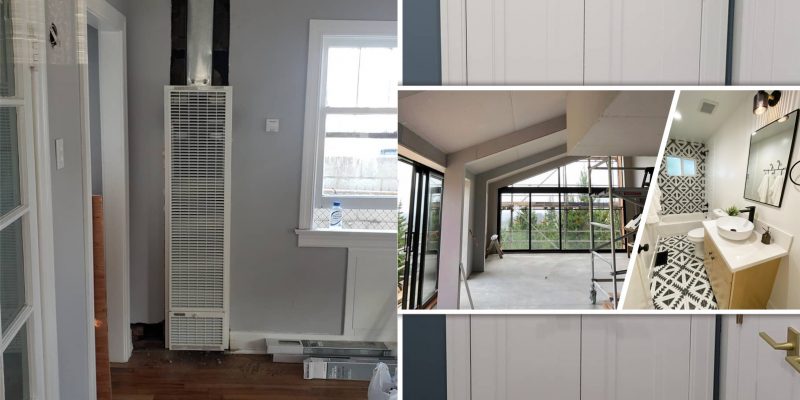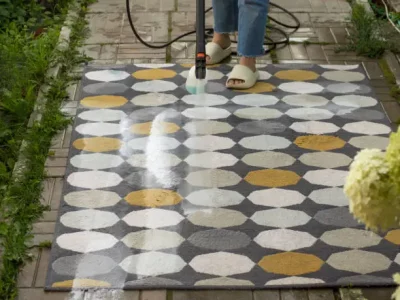Engaging in DIY home repairs and remodels is an excellent approach to save money and assert authority over the process. Certain repairs and remodels have become popular DIY choices, such as interior painting, installing plank flooring, and replacing electrical outlets. While some projects may initially appear daunting for DIY endeavors, they are indeed feasible. Moreover, there are additional projects slightly beyond your current comfort zone that you might find enjoyable as a challenge and an opportunity to acquire new home improvement skills.
Hang Drywall
When it comes to installing drywall sheets, commonly referred to as wallboard, the process is relatively straightforward and requires minimal tools such as a cordless drill or hammer. Instead of incurring expenses by hiring professionals for this task, you have the option to tackle it yourself or enlist the assistance of a partner. By taking on the responsibility of hanging the drywall independently, you can save a substantial amount of money.
However, it’s important to note that the subsequent step of mudding and sanding the drywall can be more complex and time-consuming. This stage requires precision and skill to achieve a smooth and seamless finish. If you find yourself unsure or uncomfortable with this part of the process, it may be wise to seek the help of professionals specifically trained in drywall finishing techniques.
Even if you do decide to call in the experts for mudding and sanding, undertaking the initial task of hanging the drywall by yourself can still lead to significant cost savings. By taking a DIY approach, you retain control over the project and have the satisfaction of knowing you contributed to the overall completion of the job.
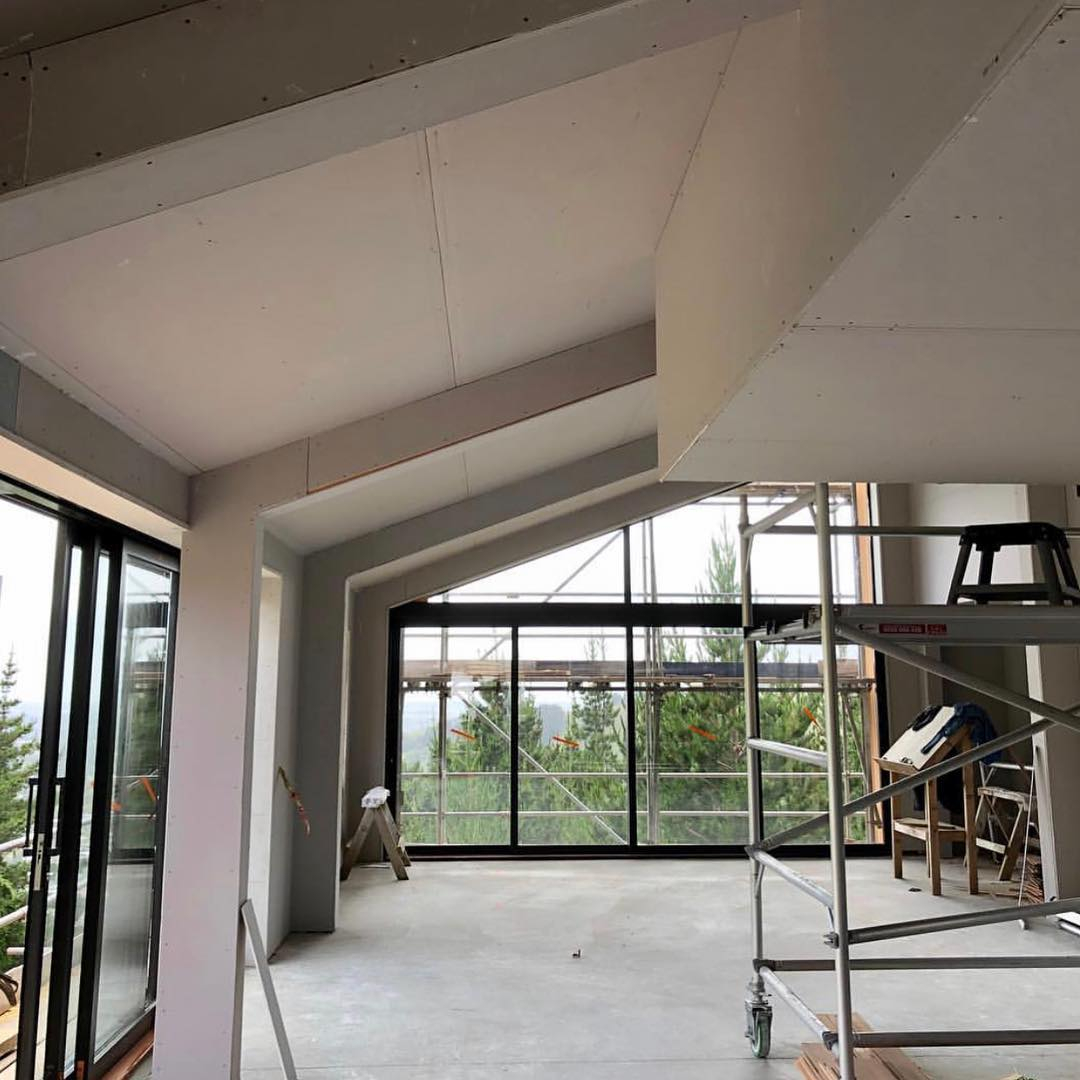
Doing the initial task of hanging drywall yourself can still result in significant cost savings. You can ask your friends or relatives to help with this drywall installation. Hang Drywall from @bcito
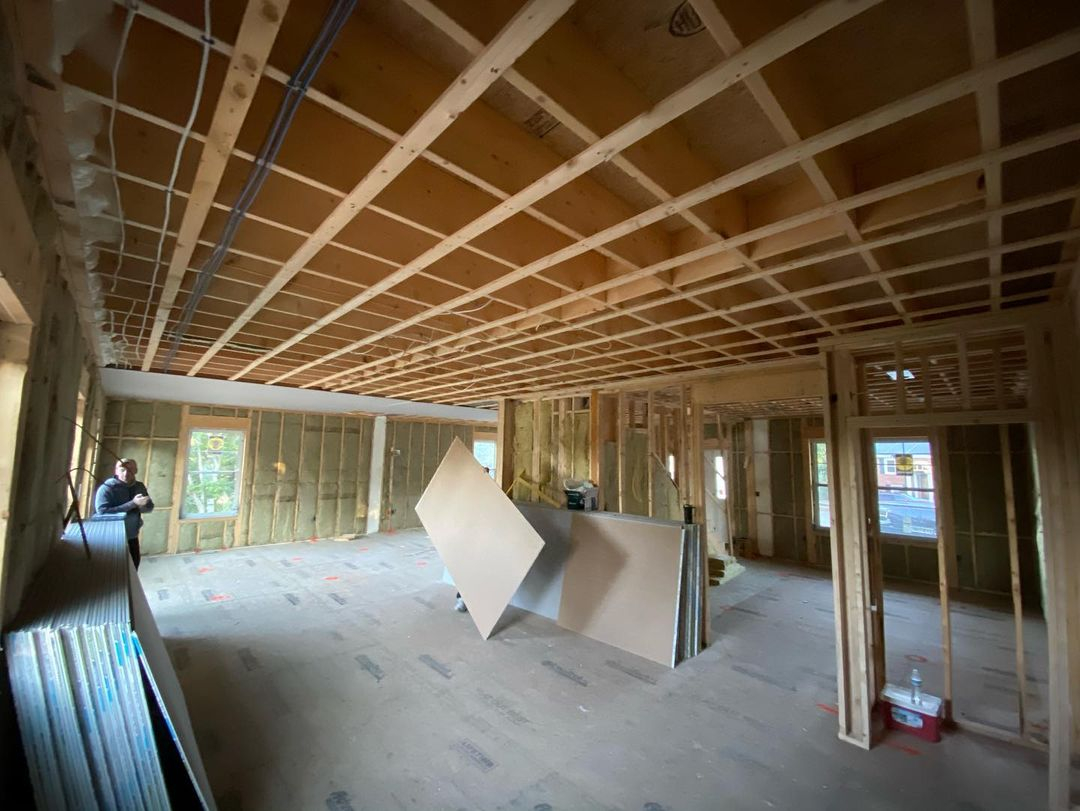
This drywall and stucco requires no service. You can do it yourself with the help of friends or family so you can save a budget when decorating your home. However, it’s important to note that the next steps of slurrying and sanding drywall can be more complicated and time consuming. Drywall And Plastering from @sathler_drywall
Install PEX Pipe
If you’ve ever been intrigued by the idea of installing plumbing pipes but lack experience in the field, PEX pipe offers an accessible starting point. PEX pipe is a flexible plastic pipe that can be easily connected using push-fit fittings or crimp rings. This type of pipe simplifies the installation process, making it more approachable for beginners.
When working with PEX pipe or undertaking any plumbing project, it’s important to adhere to local regulations. In most cases, you will be required to obtain a permit from the local authorities for new plumbing installations. This permit ensures that the work is carried out in compliance with building codes and safety standards.
By exploring the world of PEX pipe installation, you have the opportunity to delve into the captivating realm of plumbing, even if you have limited prior experience. Just remember to follow the necessary procedures and obtain the required permits to ensure a successful and code-compliant project.
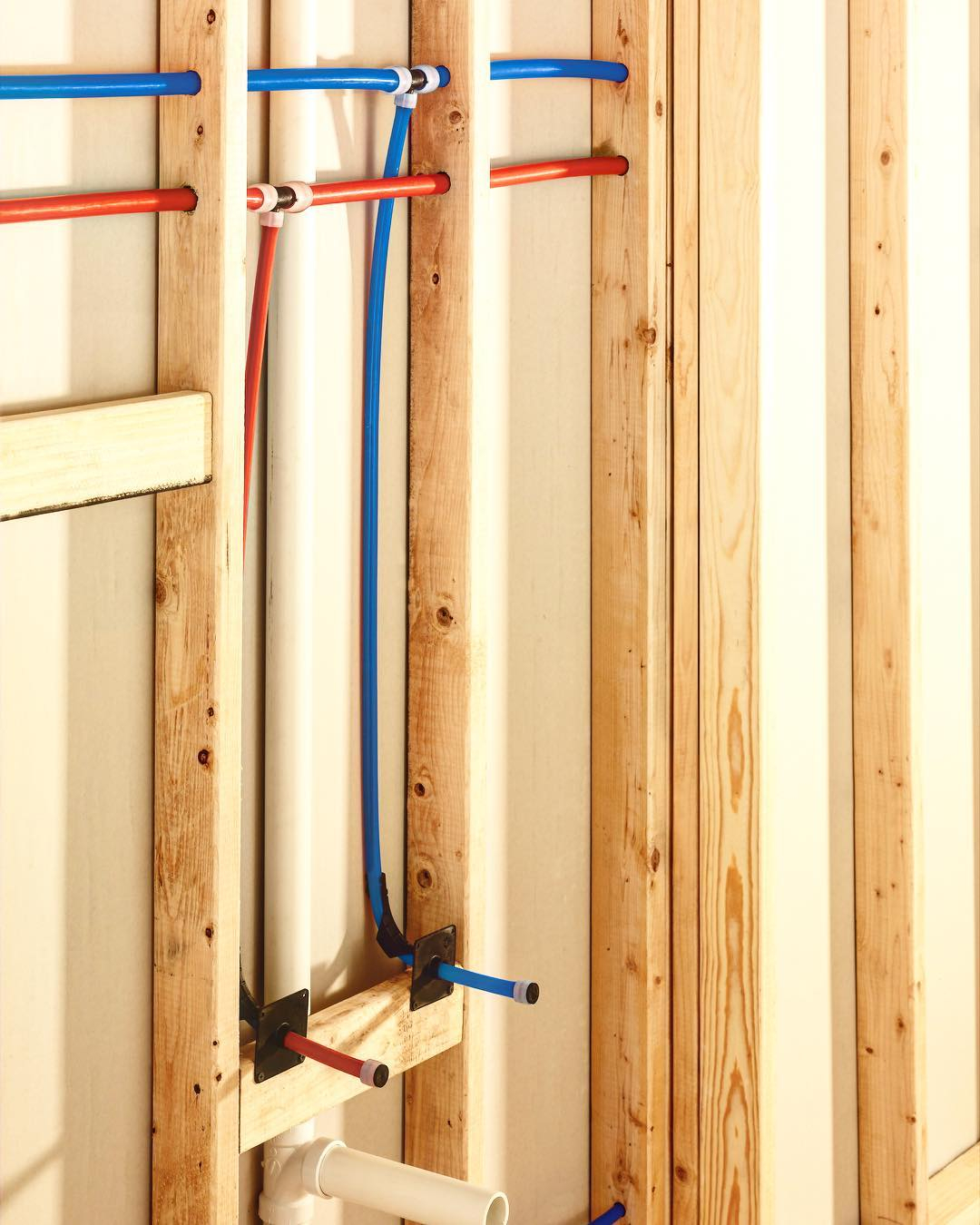
By exploring the world of PEX plumbing, you have the opportunity to learn about the captivating world of plumbing. This type of pipe simplifies the installation process, making it more approachable for beginners. PEX Pipe from @uponorna
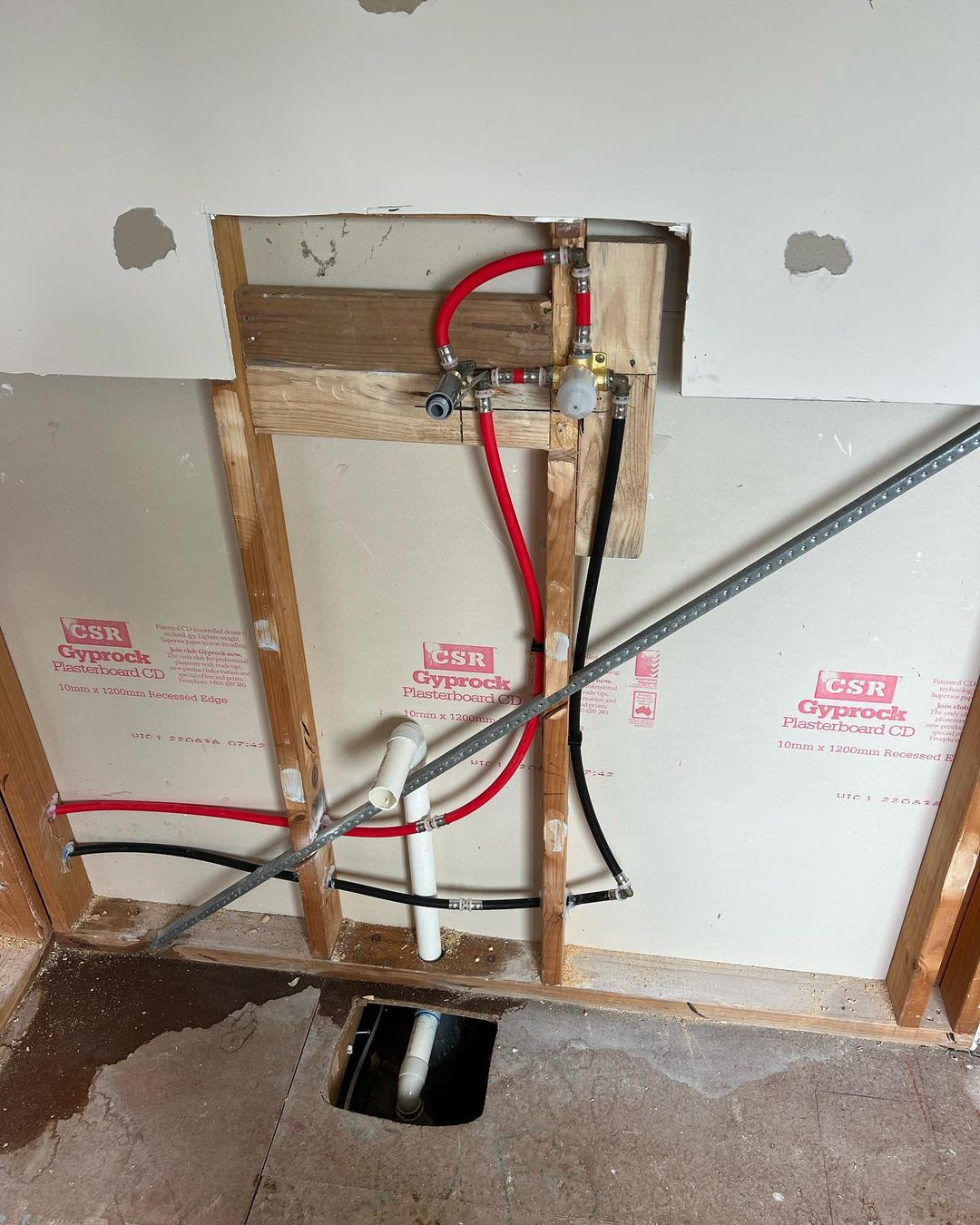
PEX tubing is flexible plastic tubing that can be easily joined using push-fit fittings or crimp rings. You can install it yourself so it doesn’t cost much. Plumbing Renovation from @plumbinggroupaustralia
Do Your Own Electrical Work
It’s essential for homeowners to be aware that they have the capability to handle certain electrical tasks themselves, even for more complex projects such as fully wiring kitchens or bathrooms or installing new circuits. However, it’s important to note that while simpler tasks like replacing outlets or light switches can be tackled without professional assistance, most electrical work does require obtaining an electrical permit.
Obtaining an electrical permit ensures that the work is performed in accordance with safety regulations and building codes. It’s a crucial step to ensure the well-being of both the occupants and the property. Additionally, certain projects like heavy-ups (increasing electrical capacity) or installing new service panels are best entrusted to licensed electricians. These types of projects involve technical expertise and potential risks that are better handled by professionals who possess the necessary knowledge and experience.
By being aware of the extent of your abilities and the required permits, you can confidently undertake electrical projects within your skill level while prioritizing safety. For more complex or potentially hazardous tasks, it is advisable to consult and hire licensed electricians to ensure the work is done correctly and safely.
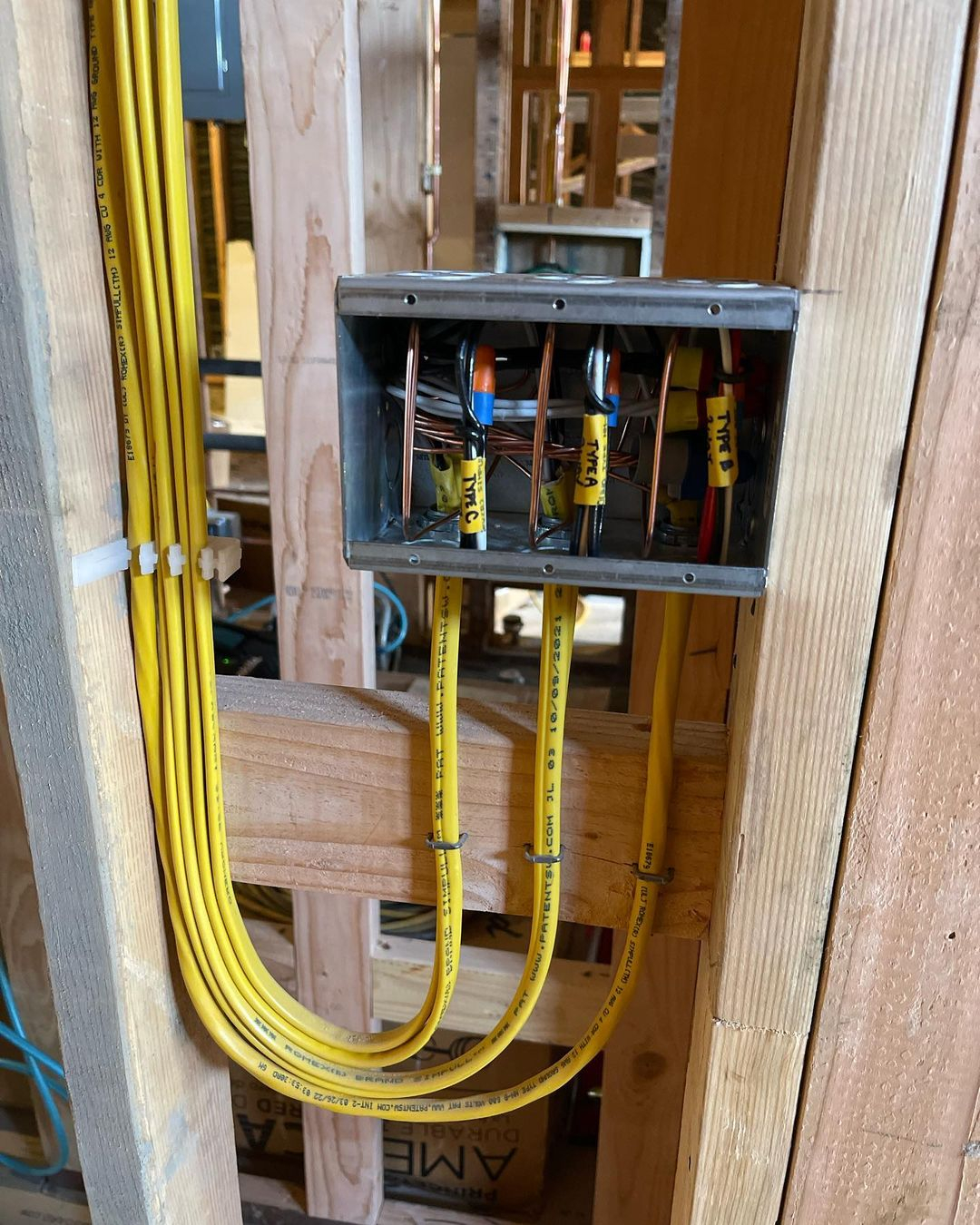
If you already have an electrical installation permit ensure that the work is carried out in accordance with safety regulations and building codes. You can do this yourself because it won’t cost much. Electrical Work from @lumenati_electric
Remodel a Small Bathroom
If you have a desire to learn home repair or remodeling, embarking on a project in a small bathroom is an excellent starting point. Renovating a small bathroom provides a valuable opportunity to experience the intricacies of remodeling without overwhelming complexity.
For instance, if you’re keen on mastering the installation of ceramic floor tiles, working on a small bathroom allows you to practice this skill on a smaller scale. The process of installing a bathroom vanity and connecting the plumbing can typically be completed within a day or two. In terms of electrical work, a small bathroom project often involves working with a GFCI outlet or two, installing a bathroom exhaust fan, and ensuring proper lighting.
By the time you finish remodeling the small bathroom, you will have acquired valuable skills that can be applied to future projects, whether it’s renovating other bathrooms, tackling kitchen improvements, or even working on different areas of your house. The experience gained from this endeavor serves as a foundation for expanding your expertise and enables you to take on more ambitious home improvement ventures in the future.

Updating the bathroom to make it more attractive you can do it yourself. You can choose to add LED lights placed behind the mirror for a good lighting idea in your bathroom. This idea will give your bathroom a nice and different design. LED Mirror Light from @creative_concepts_construction
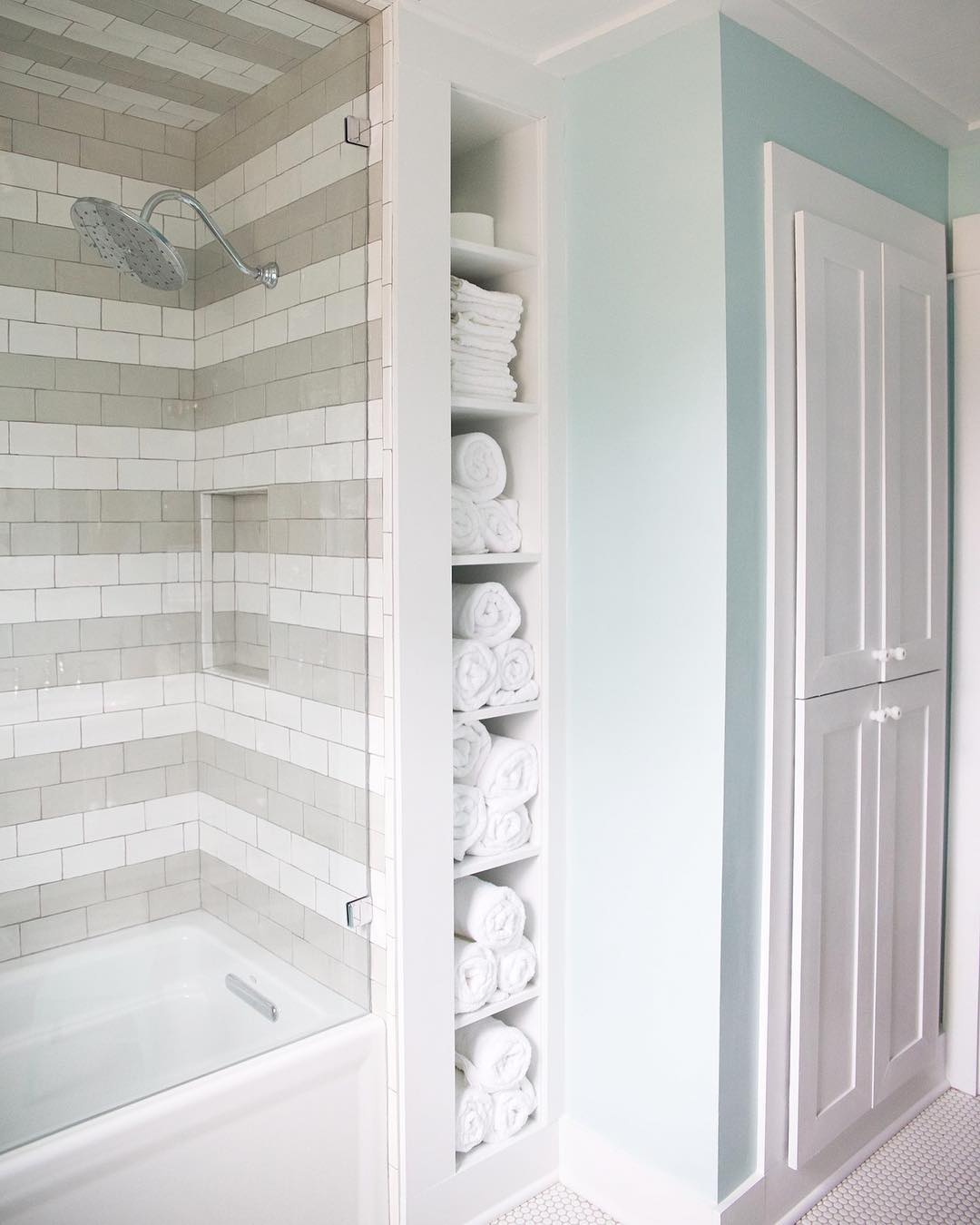
Building built-in storage in this bathroom manages to maximize the wall area in your bathroom. You can use this built-in storage to easily store various collections of towels. Built-in Bathroom Storage from @thehandmadehome
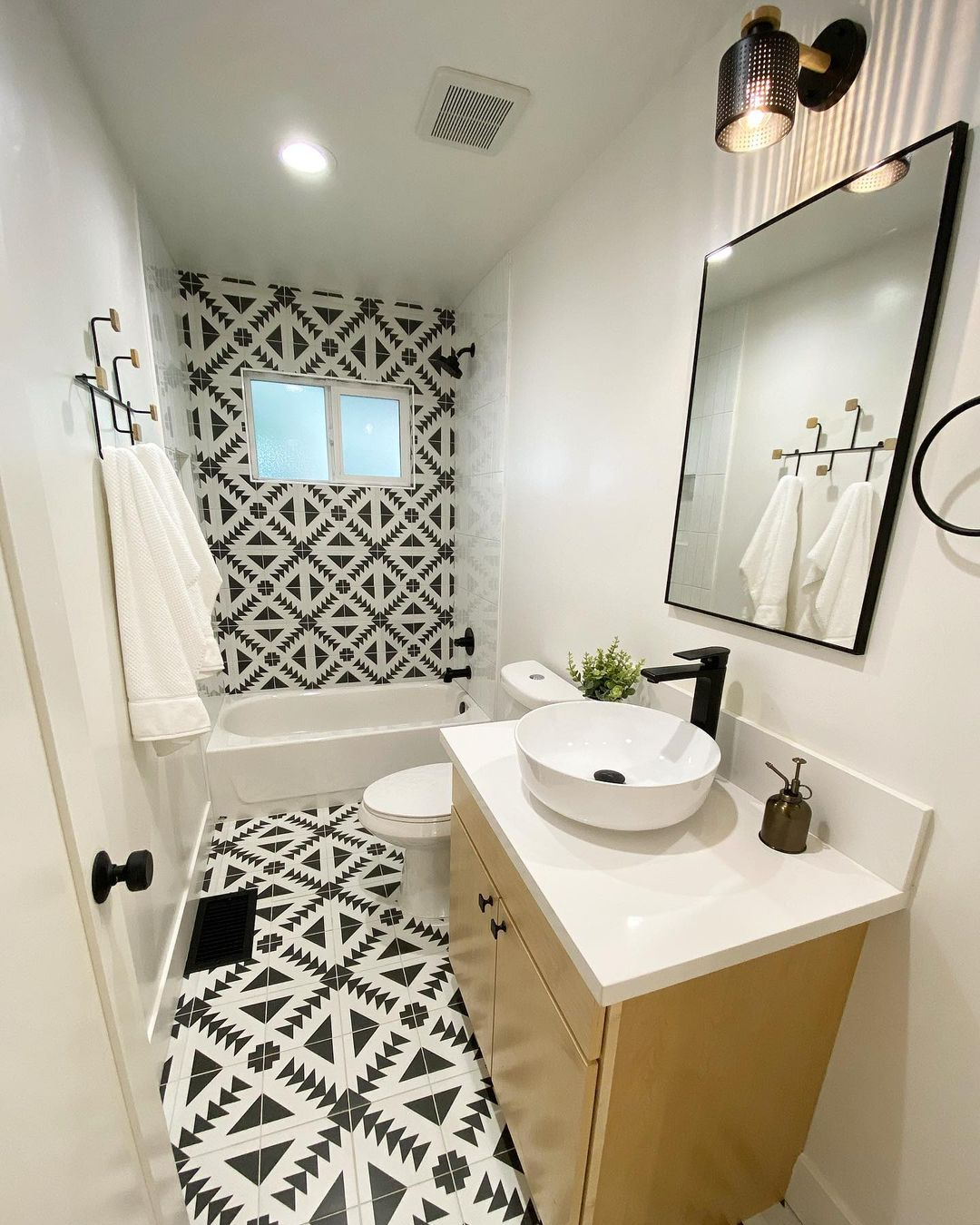
The new bathroom look by installing this patterned tile floor will not go out of style for you to try. You can choose intricate patterns on the floor and walls to make a nice room decoration that can be the center of attention. Paired with a white color scheme, it will accentuate your tiled floors and walls. Add Tile Floor and Wall from @livesaltandstone
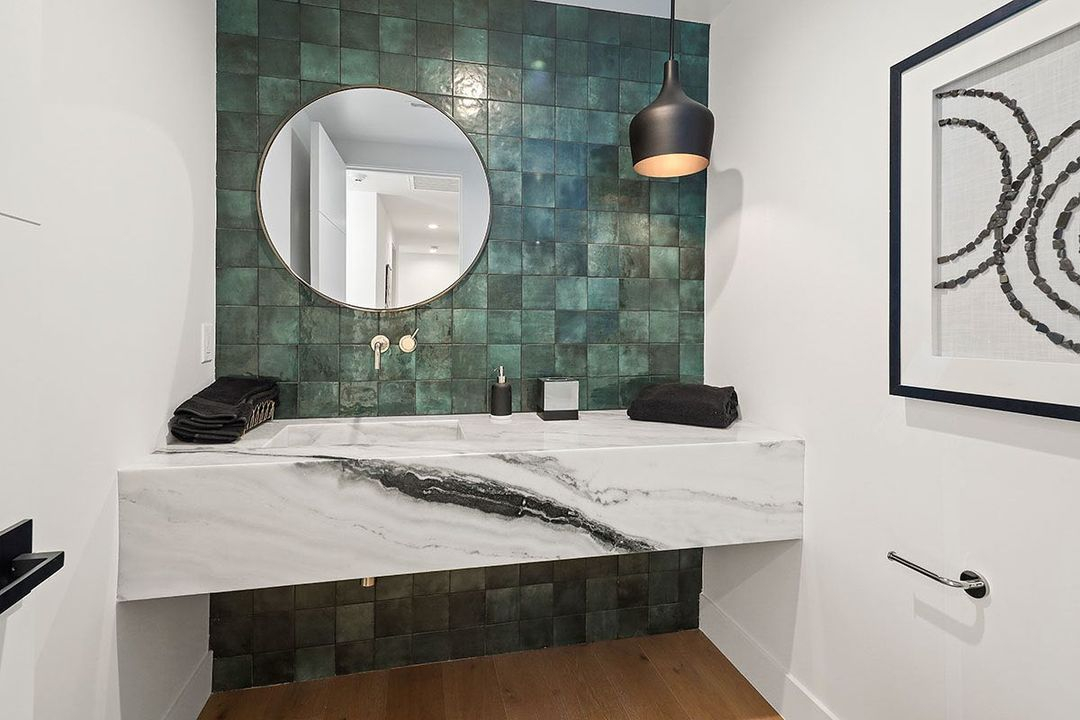
This glossy backsplash tile manages to catch the eye of everyone who sees it. You can install this tile backsplash yourself without the need to hire a service because it will save your budget. This marble sink also offers a luxurious look to this bathroom remodel. Add Backspalsh Bathroom from @concept_renovations

Renovating a small bathroom provides a valuable opportunity to experience the intricacies of renovation without the extraordinary hassle. Adding this lovely floral wallpaper manages to make your tiny bathroom look even better. Combined with silk furnishings, it manages to give your bathroom a great look. Wallpaper Bathroom from @smpliving
Seal Your Asphalt Driveway
When your asphalt driveway starts to show signs of wear and loses its vibrant appearance, it’s a clear indication that it’s time to rejuvenate it with driveway sealer. Unlike hot or cold asphalt resurfacing products, driveway sealer is a liquid solution that serves a different purpose. It is applied as a thin coat, typically using a broom, which is then spread across the surface of the driveway. Additionally, this process provides an ideal opportunity to address any cracks in the asphalt by sealing them before applying the sealer.
Install A Wall Heater
If you find that certain rooms in your home are consistently colder than desired, installing new HVAC ductwork to address the issue may not be a practical or cost-effective solution. In such cases, an electric wall heater can provide an effective remedy. As long as there is an electrical cable running to or near the desired location, installing an electric wall heater is a relatively straightforward task. Some heaters are designed to fit directly into the drywall without the need for attaching them to the studs. For heaters that operate on 120 volts, connecting the wiring is no more challenging than installing an electrical outlet. With the convenience of an electrical supply nearby, you can easily enhance the comfort of the room by installing an electric wall heater.
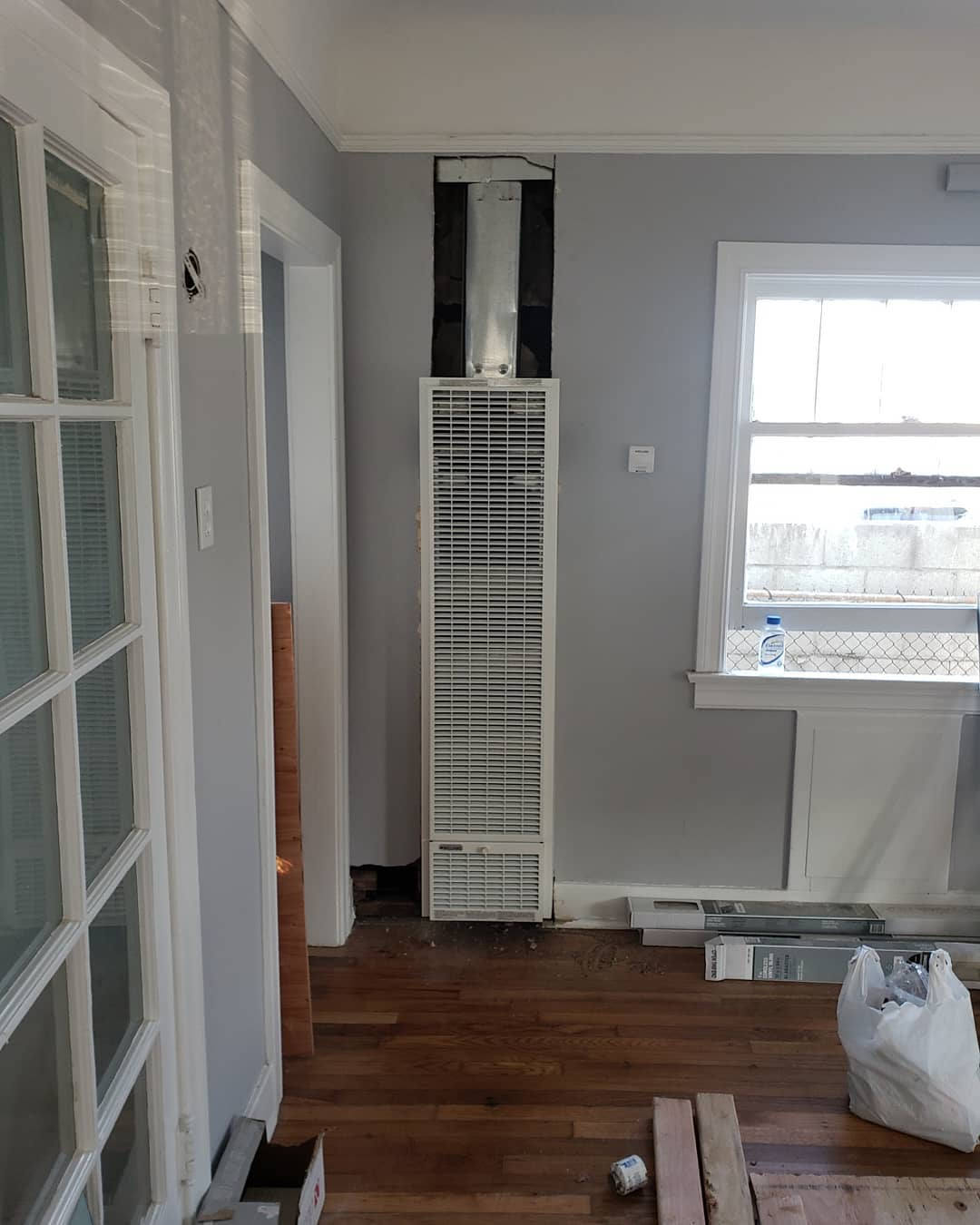
Installing an electric wall heater is a relatively easy task. This idea is easy for you to do yourself because it will save your budget when renovating your home. Choosing this wall heater won’t take up much space and of course saves more electricity. DIY Wall Heater from @amechanical_heatingand_air_inc
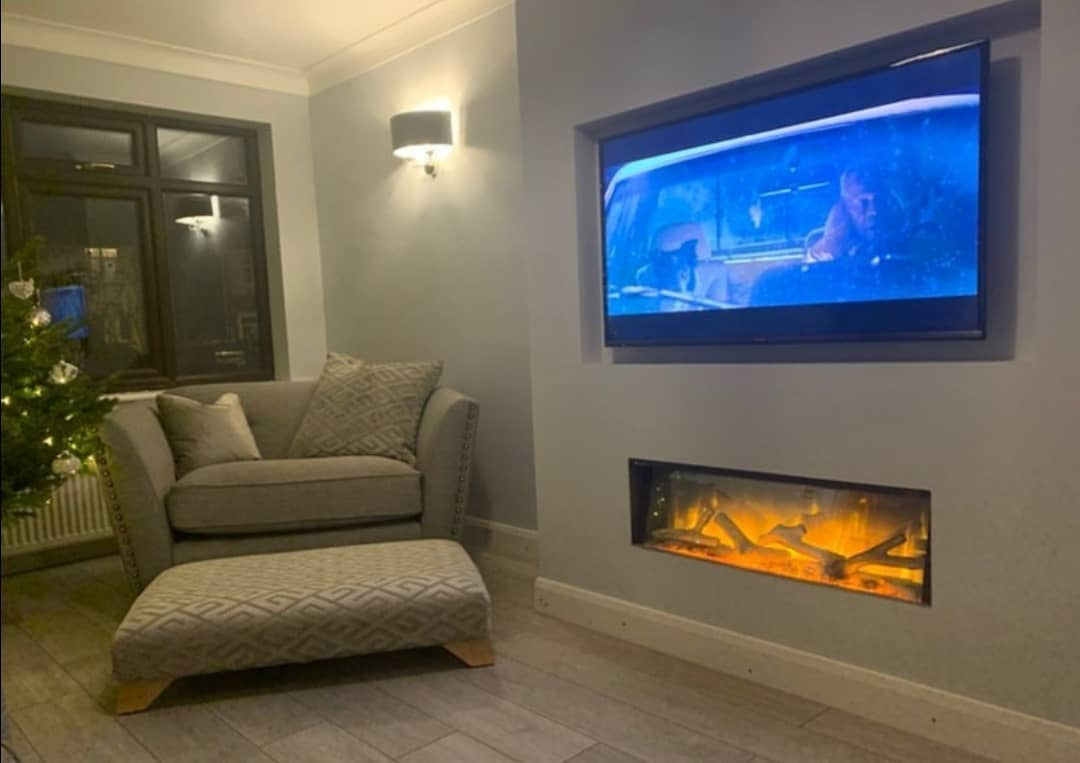
Adding a fireplace to the living room wall has succeeded in giving the impression of a warm room that you can try. Choosing a fireplace from this electric will also make a sophisticated home design. With the convenience of a nearby power supply, you can easily increase your room’s comfort by installing an electric wall heater. Add Fireplace from @fireplacewarehouse_liverpool
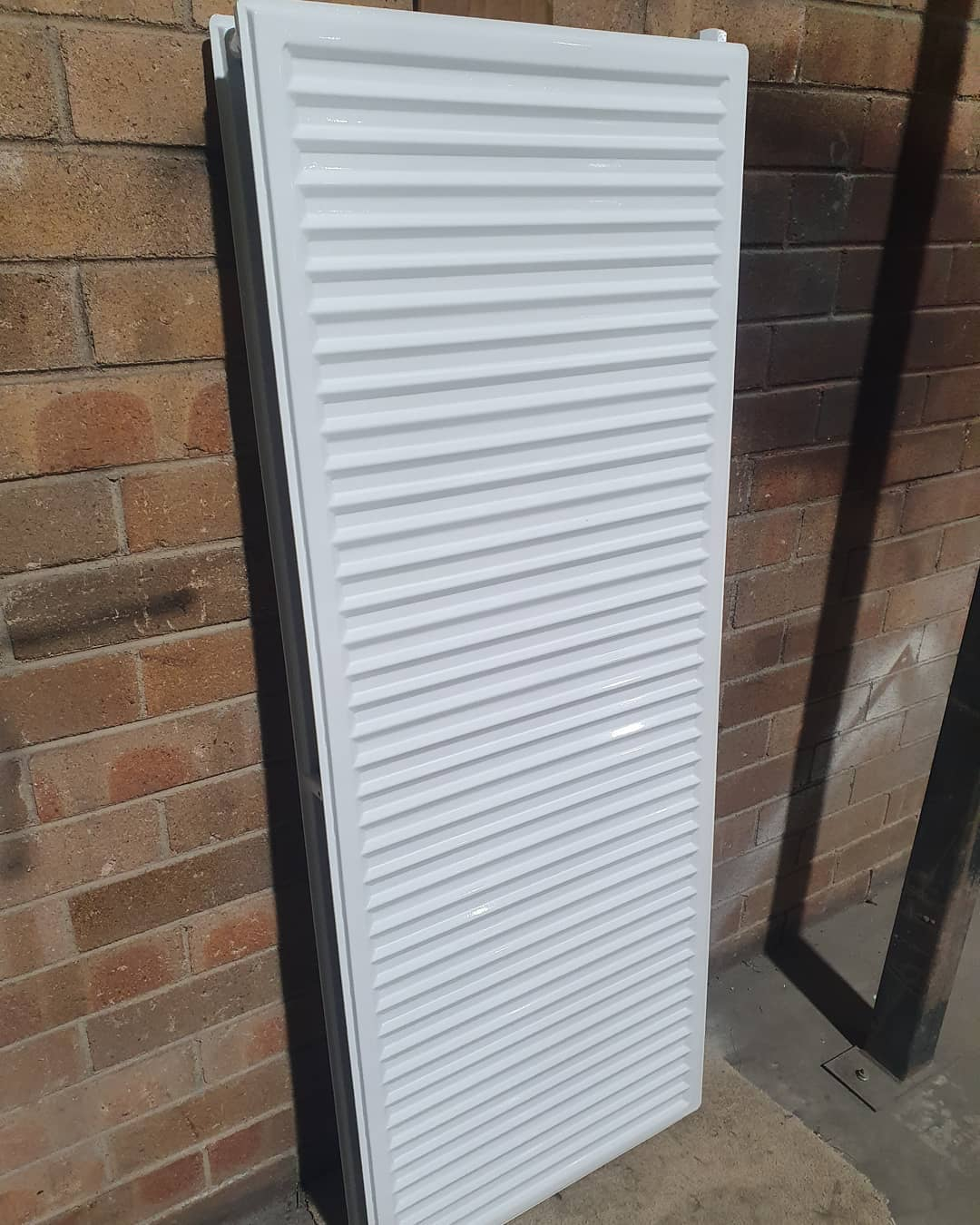
This wall heater that you can install yourself adds to the comfort of your room by installing an electric wall heater. As long as there is electrical wiring running to or near the desired location, installing an electric wall heater is a relatively easy task. Wall Heater from @pozzaspowdercoating
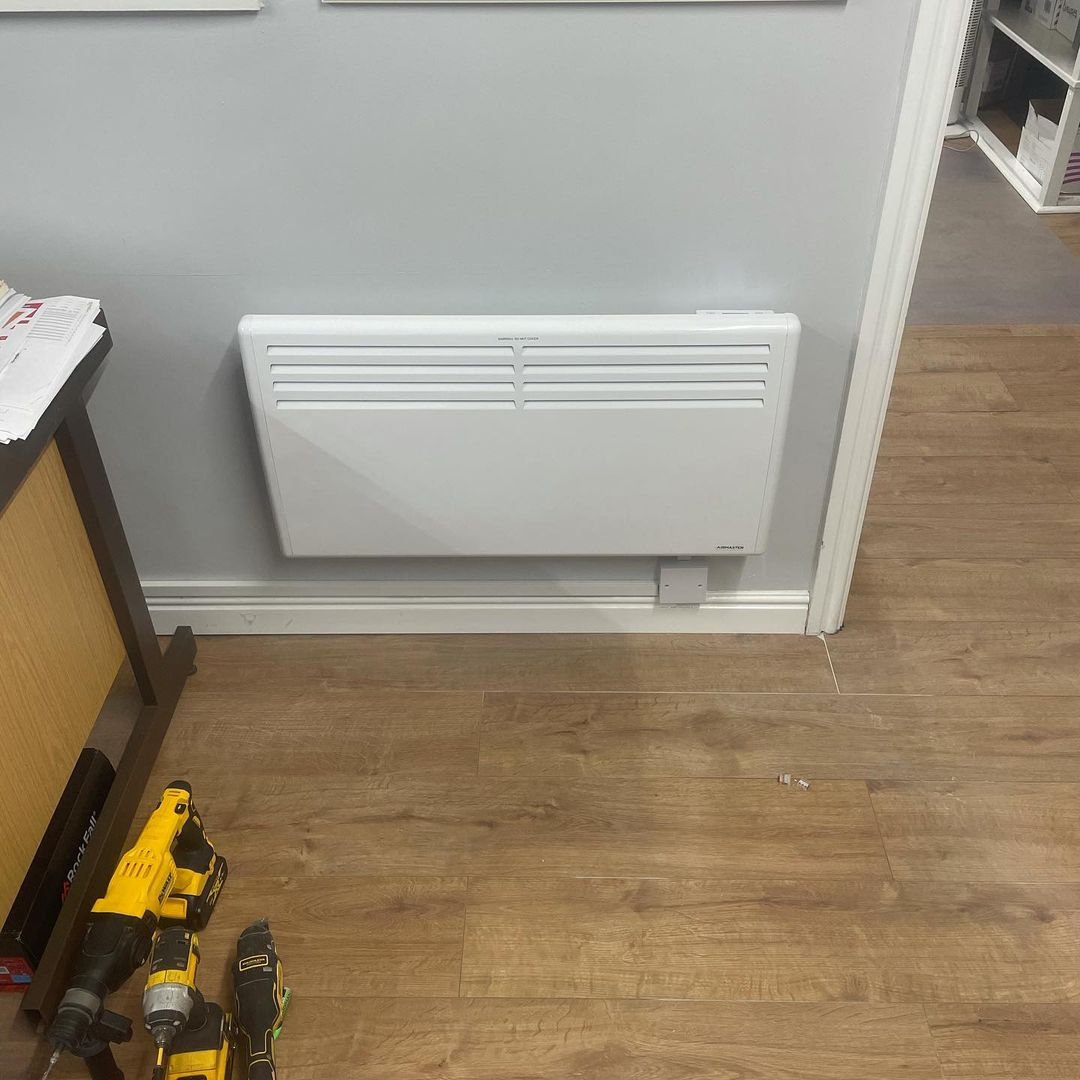
As long as there is electrical wiring running to or near the desired location, installing an electric wall heater is a relatively easy task. This will also make it easier for you to install a heater so you don’t have to rent a server and will save your budget. Electric Wall Heaters from @n.a.g_electrical
Hang an Interior Door
Installing exterior doors can be challenging as they require precise installation to ensure proper weather sealing. Moreover, the weight of exterior doors makes the handling and positioning process more demanding. On the other hand, interior doors are lightweight and can be easily managed by a single person. Weatherproofing is typically not a concern for interior doors.
If there is no existing door frame, the installation of a pre-hung door is recommended. This type of door comes with a frame, making the installation process more straightforward. However, if you’re simply replacing an existing door, you can opt for a door slab installation, which involves replacing the door itself while retaining the existing frame.
It’s important to keep in mind that while interior door installations are generally more manageable, exterior door installations require careful attention to detail to ensure they are both functional and resistant to weather conditions.
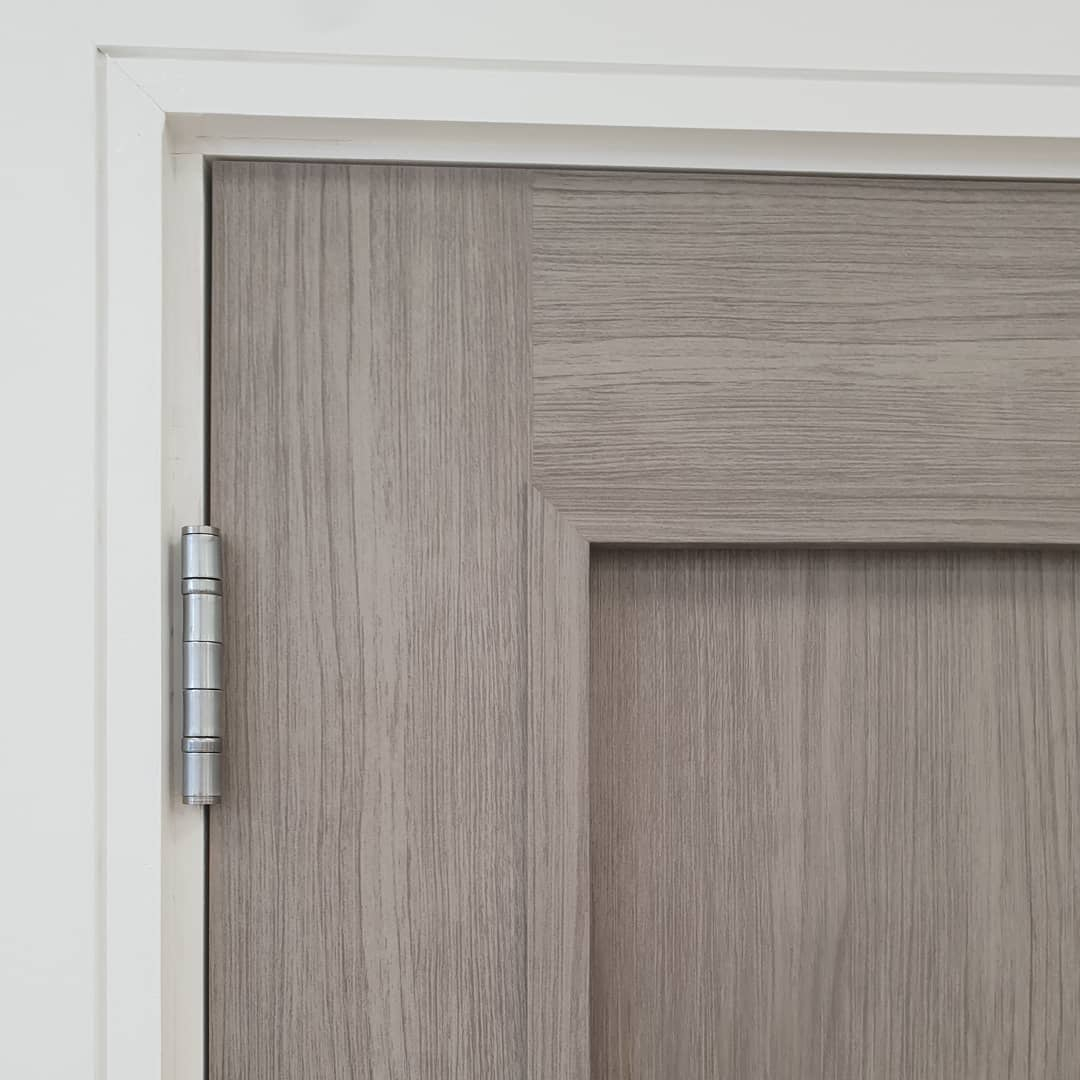
You can do this yourself by installing the replacement door yourself while retaining the existing jamb. This type of door is equipped with a frame, so the installation process is easier. Pre-Hung Door from @murphylarkin
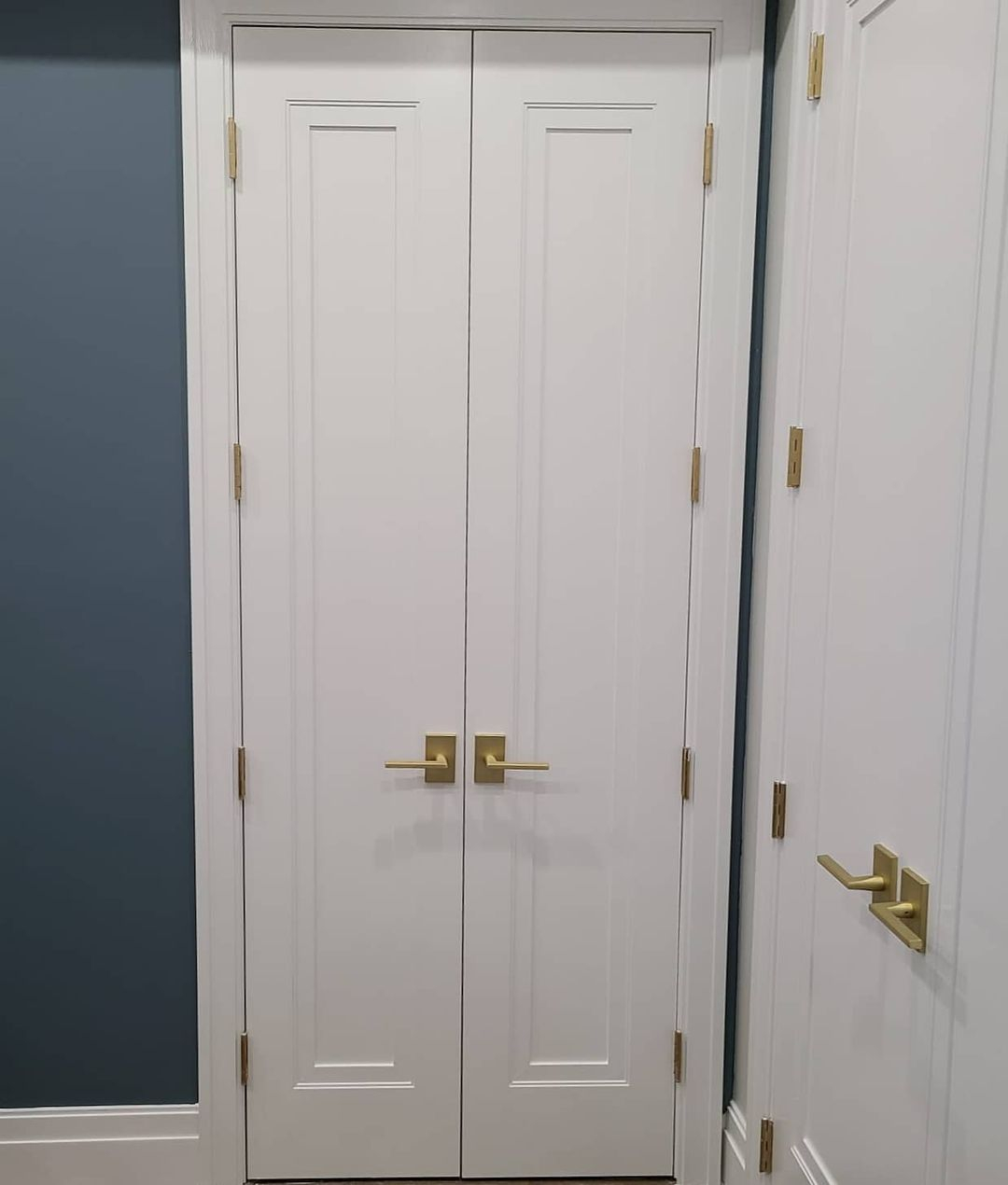
Choosing to install this pre-hung door is a door that is already equipped with a frame, making the installation process easier. Doing it yourself will not eat up a large budget and you can be sure of the durability of the door itself. Brass Hardware Door from @exclusivedoorsny
Repair Your Gutters and Downspouts
Excessive water accumulation can have detrimental effects on your home’s foundation. When your gutters or downspouts are not functioning properly, it can lead to significant water-related issues. However, by investing just $100 to $200 in gutter and downspout repair components and accessories, readily available at local home centers, you can potentially save thousands of dollars in foundation repairs. While these repairs may require you to work from a ladder, they are relatively simple and the benefits far outweigh the effort involved. By addressing gutter and downspout issues promptly, you can effectively manage water drainage and safeguard your home’s foundation from potential damage.

You can clean the gutters from the remains of debris. Just use a roof cleaning tool such as a leaf blower to make your work easier. While this repair may require you to work from a ladder, it is relatively simple and the benefits far outweigh the effort involved. Gutter Maintenance from @npinewjersey
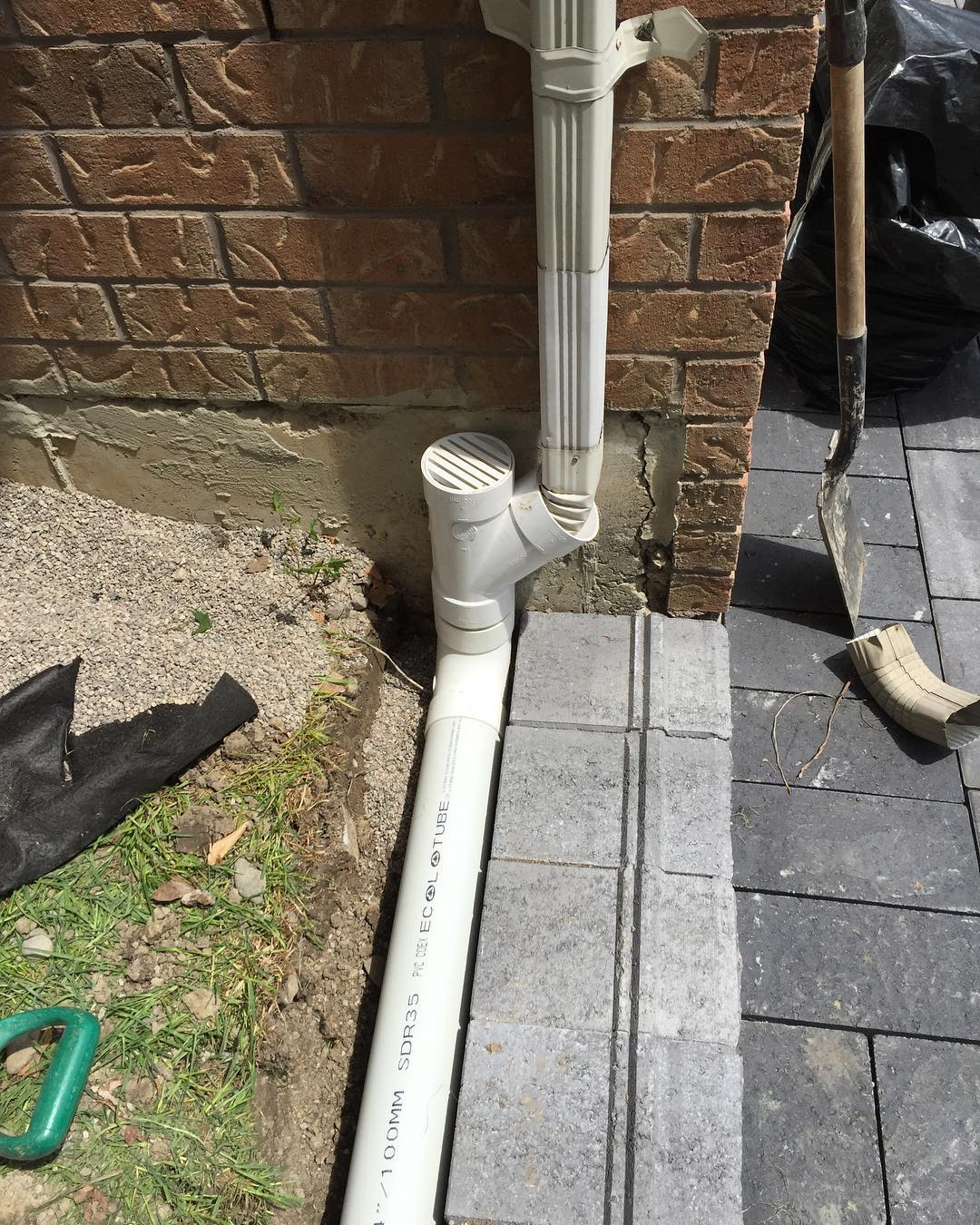
This self-repairing downspout saves you thousands of dollars in foundation repairs. Even if you work harder once a week, the rewards far outweigh the effort. Underground Downspout Extension from @artechlandscaping
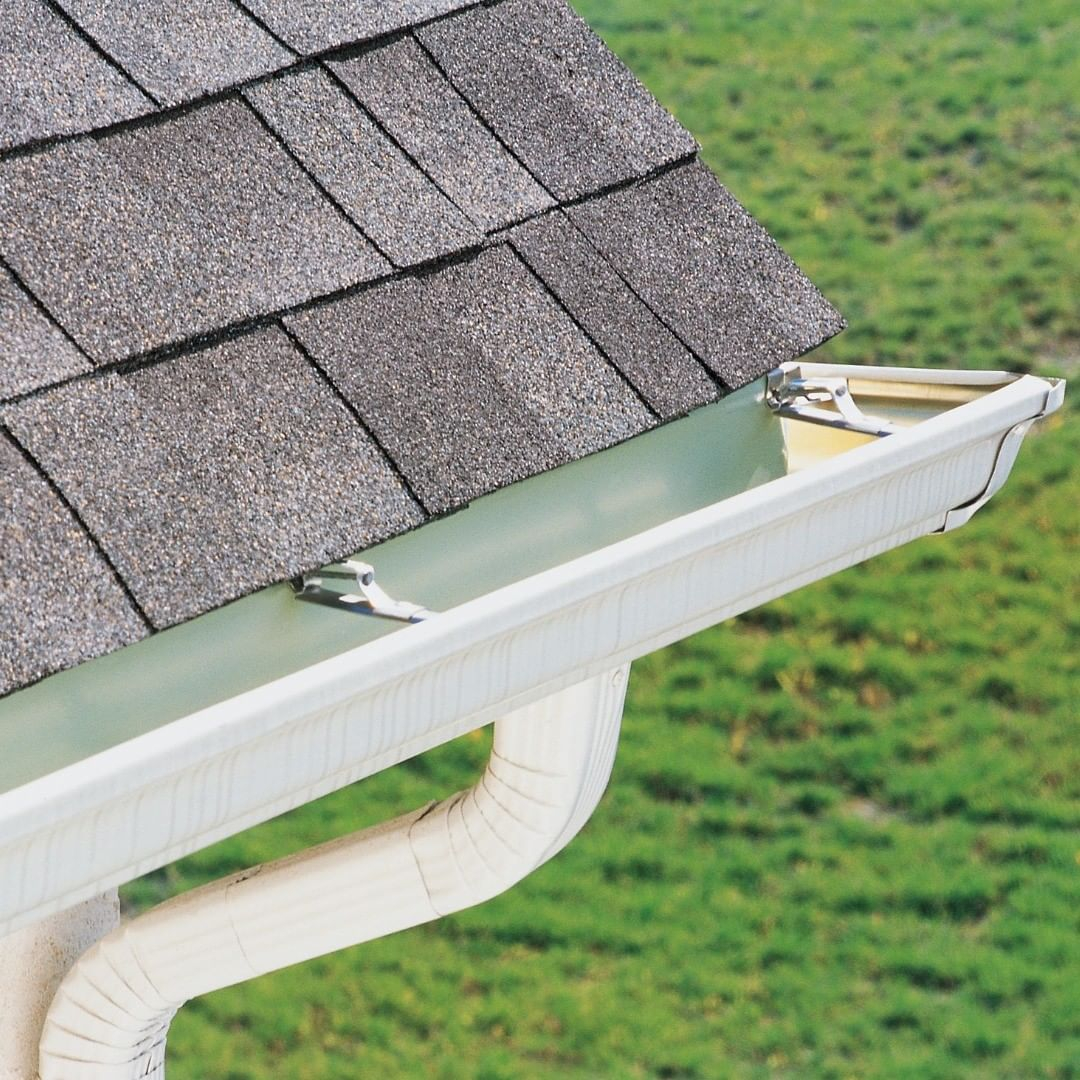
It’s a good idea to sweep the gutter off any fallen leaves, then brush it off for a shiny finish free of any mold or bacteria that can thrive. Even if you do it yourself, it won’t cost much and of course the benefits far outweigh the effort you put in. Gutters Cleaned from @pmhprojectmyhouse
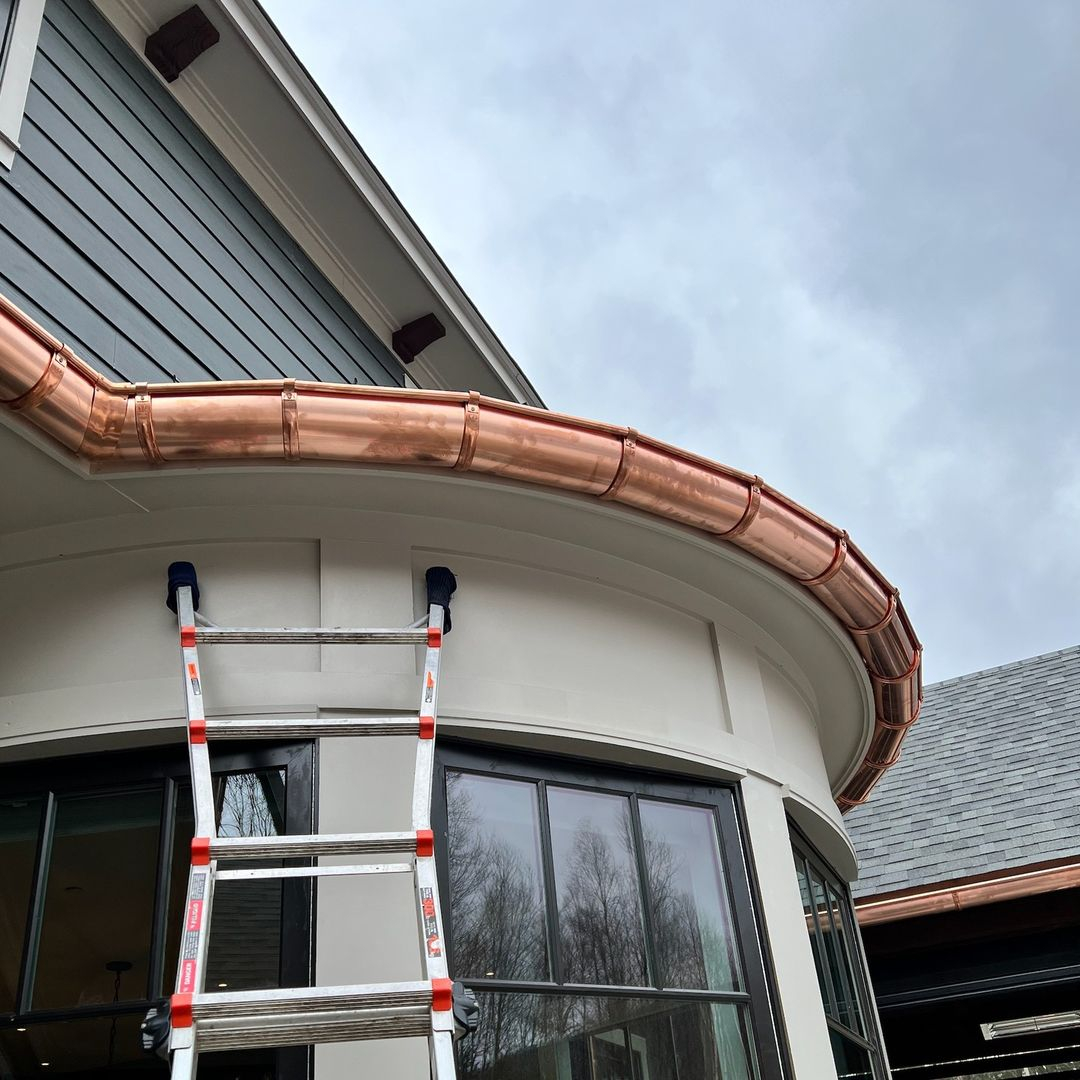
Replacing the gutter yourself will save costs and have great benefits for you to do it yourself. By promptly addressing gutter and gutter problems, you can manage water drainage effectively and protect your home’s foundation from potential damage. Half Round Gutter from @sunrisehalfround
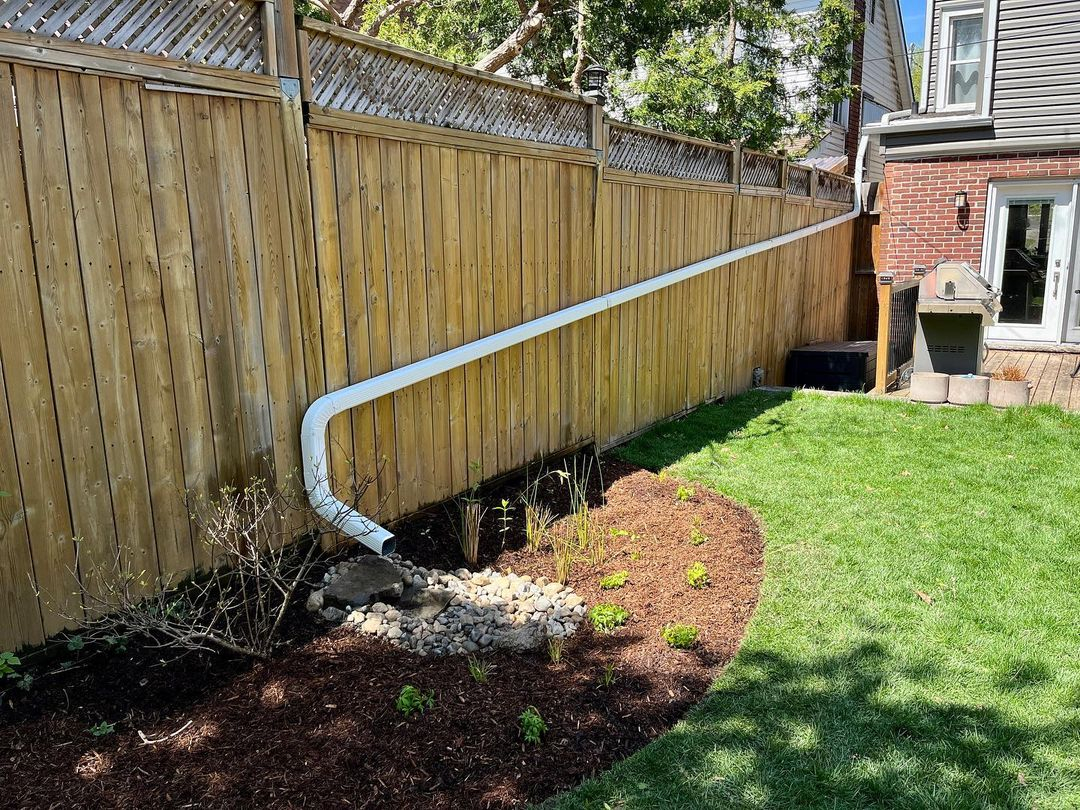
You should clean the downspout as often as possible to keep the gutter problem running smoothly. Excessive accumulation of water can adversely affect the foundation of your home. Promptly addressing these gutter problems can effectively manage water drainage and protect your home’s foundation from potential damage. Downspout Garden from @avesistormwater
Build Fence Sections
Many homeowners may be pleasantly surprised by how straightforward it is to construct a privacy fence. While the most challenging aspect is digging the fence post holes, there are motorized auger-style fence hole diggers available for rent at rental yards and some home centers, which can effortlessly tackle even the toughest soils.
Once the four-by-four posts are in place, securing them with cement is a simple task. Just pour dry quick-setting concrete around the post, add water, and allow the concrete to harden. Pre-built fence panels can then be easily installed between the fence posts. The process of building a fence is not overly complicated, particularly when dealing with a small-scale project. However, when it comes to larger yard-size fences that span more than three or four panels, the difficulty lies in the scaling-up process. In such cases, it may be more advisable to enlist the services of a professional fence company to ensure a smooth and efficient installation.
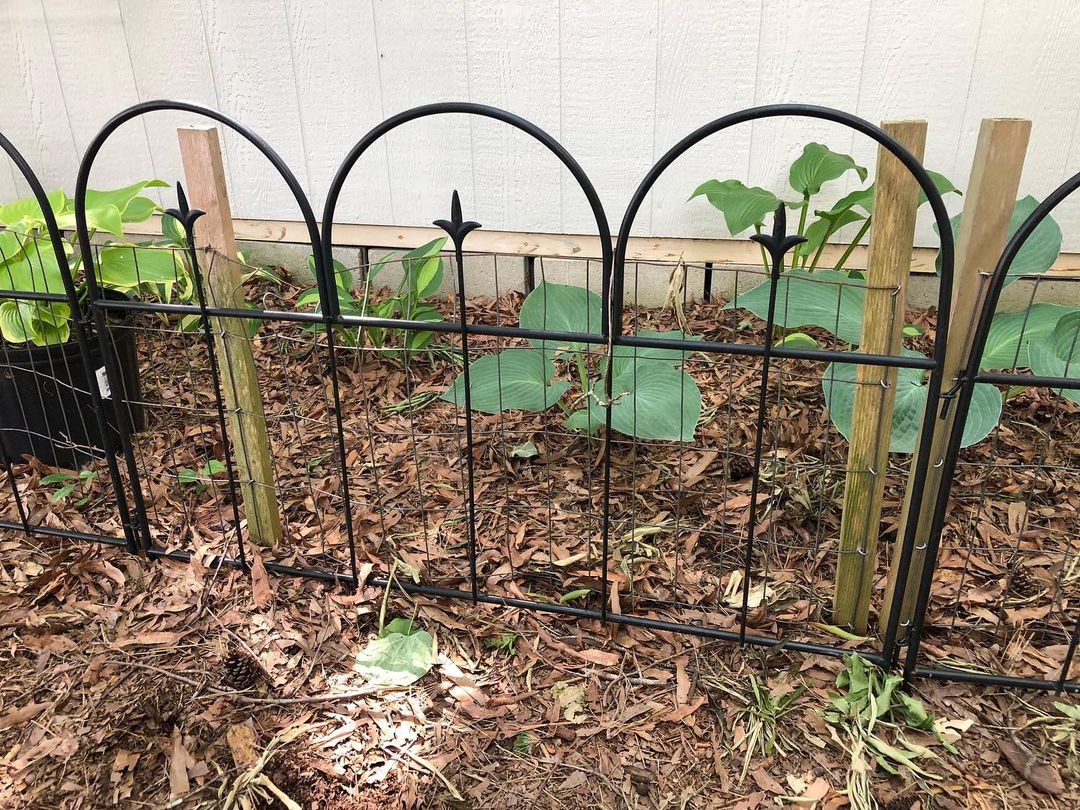
Installing this privacy fence you can do yourself. Simply pour quick-drying concrete around the posts, add water, and let the concrete harden. The process of building a fence is not very complicated, especially when dealing with small scale projects. Iron Fence from @tabbys_sweet_boykins
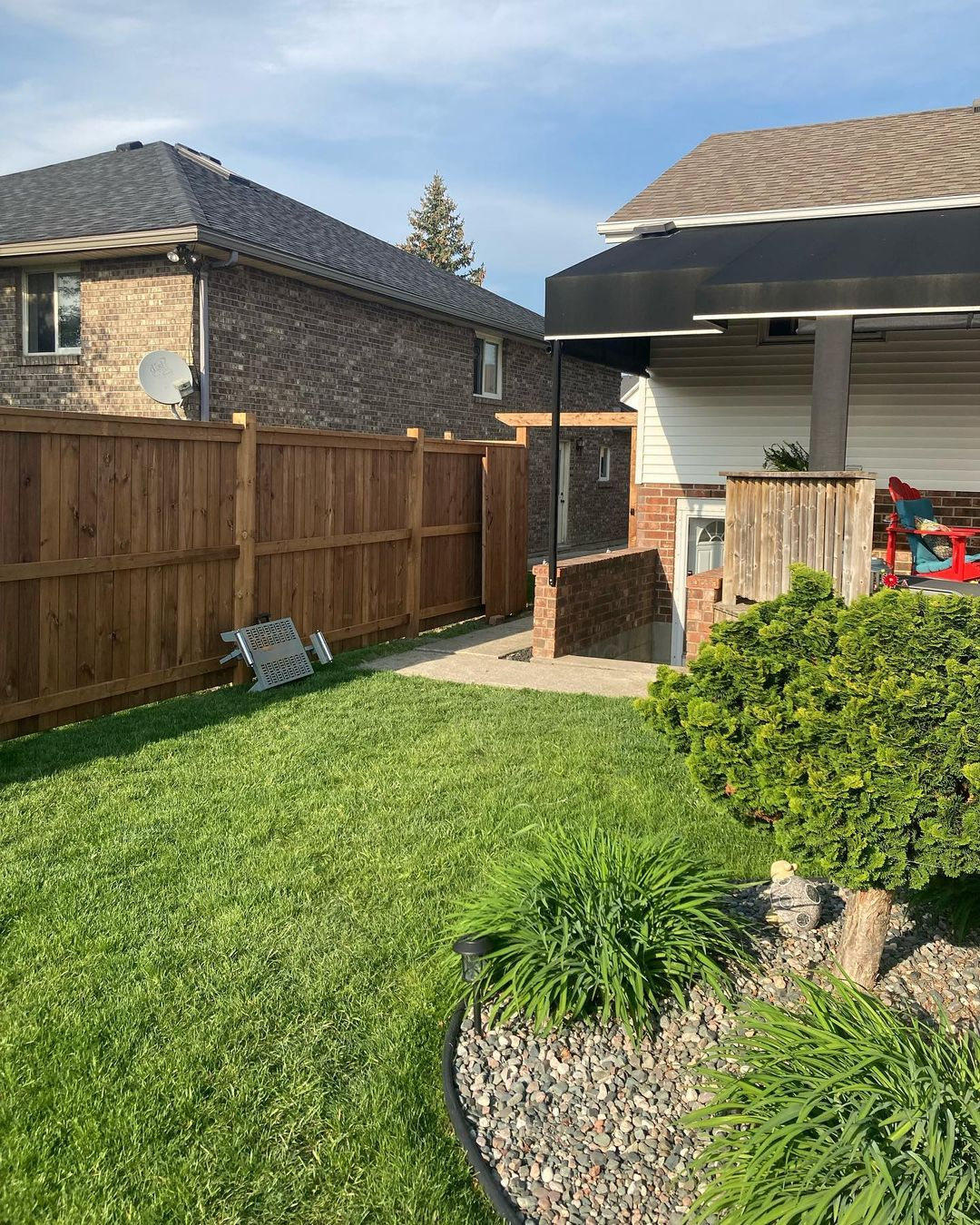
Installing a wooden fence you can do yourself in the backyard. However, when it comes to larger yard-sized fences that include more than three or four panels, the difficulty lies in the upgrading process. Wooden Fence from @chriswooden24


